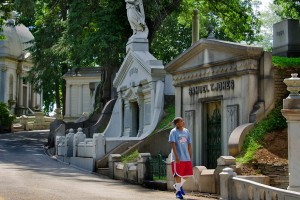Goodbye Borders … Hello Walgreens?
When the Borders at Broad and Chestnut closed last May, there was an appropriate sense of mourning for a store that once epitomized the new Avenue of the Arts and a revitalized Center City. Now comes news that the first potential tenant to emerge for that prized space borders on the tragic: Walgreens.
The drug-selling giant, dispenser of diapers and toothpaste, wants to install a new model it’s been experimenting with in Chicago—a bistro and cafe on the first floor, topped by a pharmacy above. The good news is that the same store that would make us all vomit if it actually appeared in that location would also sell anti-nausea medication. The better news is that the city zoning code doesn’t permit any more drugstores on the Avenue of the Arts. “The idea of a drugstore there doesn’t work for us,” says Alan Greenberger, deputy mayor for economic development. “Pharmacies generally, with opaque windows and lots of signage, do not contribute to the life of a city street.”
Walgreens executives, then, would need Greenberger and city officials to allow an exemption to the zoning code. But Greenberger sounds unlikely to be moved, even by a first-floor cafe. Chestnut Street is too vital a part of the city’s crucial retail and restaurant ecosystem, he says—a main artery that a Walgreens would only clog.
But finding a more suitable tenant won’t be easy. The space that served Borders so well is difficult to modify—a small first-floor footprint, a tinier second-floor mezzanine, and the main retail space on a vast third floor, all connected by long, steep escalators. The Cheesecake Factory supposedly looked at the space, then decreed it unworkable. So for now, the Borders space will remain empty—just one more change for the worse along Broad Street.
Marathon Grill recently closed its neighboring Chestnut Street location. The University of the Arts, nearby at Broad and Walnut, is replacing the old Italian Bistro with a dining hall. Center City District CEO Paul Levy and Greenberger both defend the university, but acknowledge the challenge. “We’re used to seeing students dancing on the upper floors of the University of the Arts building, which we still have,” says Levy. “But we’re also used to seeing people browse the book aisles at Borders. That’s the sort of vibrancy we’re trying to protect.”
This piece originally appeared in February 2012 issue of Philadelphia magazine.


